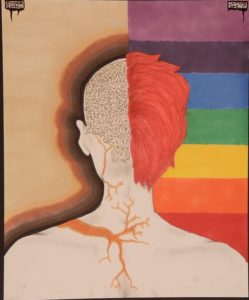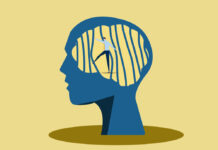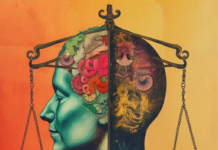In a new article published in the Journal of Prevention and Health Promotion, counseling psychologist John Westefeld of the University of Iowa describes how we can begin to understand suicide and suicide prevention as a social justice issue. Westefeld offers a nuanced analysis of the term ‘social justice’ and a thoughtful discussion concerning the intersection of social justice and suicide prevention.
“The central thesis presented is that suicide—especially suicide prevention—is a social justice issue.”

Social justice is notoriously tricky to define. The meaning of ‘social justice’ has shifted throughout history. Despite its ongoing effort to align itself with social justice’s many aims, critics have argued psychology and psychiatry often perpetuate many systemic injustices that social justice movements push back against, including colonialism, racism, and classism. As suicide rates climb in the United States,’ psychology and psychiatry ought to see suicide prevention as a social justice issue, too.
In “Suicide Prevention: An Issue of Social Justice,” John Westefeld notes that social justice is a central tenet that affects human service professionals throughout the United States and the world and can be understood as “activities designed to reduce suffering among people and promote the values of ‘equality and justice.'” When taken into account alongside the racial disparity in the United States’ current suicide statistics, this definition highlights that suicide prevention is undoubtedly a social justice issue.
“The most current data available from 2018 indicate that there were 48,344 suicides in the United States, which is one every 11 minutes. Suicide is the 10th leading cause of death overall in the United States and the second leading cause of death among 15- to 24-year-olds. In 2018, there were 596 suicides by children between the ages of 10 and 14 years. More than 50% of suicides are carried out utilizing a firearm,” Westefeld writes.
“The suicide rate has steadily increased over the past 10 years. Among U.S. ethnic groups, American Indians/Alaskan Natives have the highest suicide rate. Between 1991 and 2017, there was an increase of 73% in suicide attempts among Black adolescents. When suicide rates were examined among Black and White youth below the age of 13, the rate among Black children was twice that of White children.”
Westefeld goes on to point out that both systemic suicide prevention, as well as individual prevention strategies have many of the core tenets of social justice work built-in: reducing the stigma around mental health services, reducing means (especially firearms), and increasing accessibility to services and community.
However, both strategies still have a long way to go before genuinely addressing suicide and suicide prevention as social justice issues, Westefeld claims. Arguing that: “stronger inroads can be made from the area of preventing suicide, and the welfare of the society can be promoted. The intersection of suicide prevention and social justice provides a potential strategy for affecting suicide prevention more broadly and more directly—and hopefully lowering the suicide rate.”
He finishes the article with implications and recommendations.
- Suicide prevention should focus on multiculturalism to better address unique system-level stressors for certain groups of people and individual identities.
- Access to means must be significantly restricted, in particular, handguns. “There is a strong positive relationship between firearm access and suicidal risk.” Not only is a gun deadlier than other means of suicide, but at-risk groups such as veterans are also more likely to own a gun than other groups of people.
- There needs to be more research done on suicide prevention. “Both qualitative and quantitative studies are needed so that more can be learned about risk and prevention effectiveness, as well as what can be done to increase advocacy.”
- When training individuals on suicidality and suicide prevention, there needs to be a discussion of advocacy and the social justice components of suicide prevention. Trainers also ought to be aware of their own biases and privileges.
- Lastly, given that COVID-19 affects different groups of people disproportionality, in ways not dissimilar to other injustices, action should be taken to prepare for a unique kind of suicidality that may erupt in the coronavirus’ aftermath.
****
Westefeld, J. S. (2020). Suicide Prevention: An Issue of Social Justice. Journal of Prevention and Health Promotion, 1(1), 58-79. (Link)















“psychology and psychiatry often perpetuate many systemic injustices that social justice movements push back against…” Psychology and psychiatry are all about creating injustice. For God’s sake a psychologist recently tried to steal all my money, work, and take control of my story, accountants, and lawyers with a BS “art manager” / classic thievery contract. Because I’m an anti-psychiatry activist, who stands against the psychologists’ and psychiatrists’ systemic harm of children, especially child abuse survivors.
Not to mention, until forced treatment is made illegal, psychology and psychiatry will always be about ungodly injustice.
“reducing the stigma around mental health services” is not the answer either. Throwing away the “invalid” and “unreliable” DSM stigmatization “bible” is the answer.
“increasing accessibility to services,” mostly neurotoxic poisoning services, which harm more than they help, is also not the answer.
Getting the psychological and psychiatric industries to stop gas lighting, “psy-op”ing, lying, DSM defaming, and neurotoxic poisoning innocent people, is the solution instead. Getting them out of the child abuse covering up business, an illegal business, but their primary actual societal function, is also part of the answer.
All this talk about how psychology and psychiatry, without making any real systemic change, care about “social justice,” is just more hypocrisy, more “bullshit.”
Psychology and psychiatry “cannot solve our problems with the same thinking we used when we created them.” Yet that’s exactly what they’re still trying to do. “more research,” “more research,” “more research,” always calls for “more research.” No, real systemic change is the answer.
Report comment
“There needs to be more research done on suicide prevention. “Both qualitative and quantitative studies are needed so that more can be learned about risk and prevention”
More “research”. Excellent. Provides more jobs.
——————————————————————-
——————————————————————
Those lines represent something i deleted because it would receive moderation. One could say I moderated myself. 🙂
Report comment
Samantha: If you are located in Edinburgh, have explored film and the manner by which the language of “colonization” extends into the laboratory of and use of agar on the plates? To understand the sense of your research, the impact of the industrial nature of the Scot’s ability to have shaped steam at Glasgow poses significant space to hold the social accountable in suicide prevention? How would you realize the impacts of your search altering the prevailing design and operation of the designed and engineered space into focus for yourself and others? (And nations?)
Report comment
It seems like feeling like you really belong, and have a decent way to provide for yourself and family, is what would help the most to prevent suicide. You wouldn’t have to do a lot of research about that. Just how in the world you would help people get those things, is all.
Report comment
How many of those children were on psych drugs? Psych will pretend that they need drugs when it is most likely that the drugs caused it. Someone explain why psych is allowed to be drug dealers to kids, but not happy drugs. Rather drugs that actually CAUSE suicides. It says as much. Oh wait, the info is theirs, to be presented as “it might” and “suicidal thoughts”.
Report comment
Since this article is still up, and I’m hoping that readers see how children and peasants become “statistics” after they are dead or injured. Not people, not responsibilities but rather “research” and “studies”. Exactly as it was before injuries or death. We have the capacity to do research but not actually make active change.
We know that need came before injury or death, how that need is directed to psychiatry is the whole issue. Psychiatry is the “avoidance disorder”. Psychiatry conveniently assigns the illness of who we are as a species to certain individuals who reflect or carry the symptoms of fuck up. To be directed to the greatest fuck up, which is psychiatry has horrendous results.
This article on suicides ties in well with the article by Peter Simons, which reports the well known increase in suicides. The fuck up psychiatrist who refuses to be frightened by the poisons he prescribes, should not be allowed to practice. It is downright malpractice to prescribe a drug knowing it can greatly contribute or cause death. There are indeed many factors in suicides, and we would think the very first attempt to prevent such things would be to stay away from that which contributes.
We need to have serious inquests as to exactly WHY malpractice is allowed to continue, unchallenged and why there are no prosecutions of these charlatans. https://www.madinamerica.com/2020/11/researchers-antidepressant-use-children-increases-suicide-no-evidence-benefit/
So called doctors, grown men and women, resort to protecting themselves rather than exposing real issues, they resort to calling anyone who is exposing the real harms as anti-psychiatry, (which is a word that is supposed to invalidate the exposing), they continue to engage in their pathetic, weak, selfish, self serving approaches. Psychiatry not only does not want to be found out about their industry, but rather their own fucked up existence.
Report comment
Feeling in despair from powerlessness, family scapegoating, relenteless systemic bullying, all kinds of reasons people would want to give up on life. These things do mess with the mind and it is heartbreaking. Perhaps a bit more kindness, along with the ability to hear and listen with compassion when someone is suffering, would go a long way in helping people to not feel so hopeless and alone during hard times. Common sense if one is attuned to human nature, no research needed.
Report comment
All fine points apart from: “reducing the stigma around mental health services.” These services increase the risk of suicide.
Report comment
Absolutely without a doubt John.
And it has nothing to do with “stigma”. Psychiatry itself strongly engages in and promotes discrimination.
“Stigma” seems like the perfect “public” word. It is a PR word. to distract from the fact that psychiatry and it’s sheep, medicine, and all other civil services ALL partake in DISCRIMMINATION. Imagine that on a psych report it read that “She is feeling distressed and not able to partake in a stressful job at the moment”. Instead psychiatry says that people who are reacting to stressors are “mentally sick”. Or have character flaws. No one else is creating “stigma”. It lies completely on the shoulders of psychiatry. Psychiatry could in one hour do away with it’s own harmful language.
Report comment
I’m sorry, but “social justice” is nothing more than an oxymoron or at the very least a misnomer. it could be go so far as “doublespeak.” It is neither social or justice. I, honestly, do not like the connection this article is trying to make between veterans and guns and restriction of access to guns by veterans. Actually, suicide by gun is not just limited to veterans or even men. Once, my father, as a Vietnam Veteran, had a brief time considering suicide. My mother, just hid the guns briefly, that’s it. The notion of restricting access to anything, including guns, implies governmental or other intervention, which is highly unconstitutional. Actually, if you extrapolate from this article, that if you think giving someone free speech or freedom of worship or assembly could cause them to be suicidal, that could be considered, also, even though that is unconstitutional. This is not just government overreach, it is Anti-American. In my line of thinking, it would make the veteran, already in a “down state” to further doubt his or her ability to be a contributing member of society. That is where the danger lies, when people begin they can no longer contribute to society. That is where these psychiatric drugs come in; they through they effects and even just the implication of their use causes a person to easily think they can no longer contribute to society. I know. It happened to me. To me, the way to lower the suicide rate is to stop the drugs, the false therapies, etc. and let people live and be as our Creator intended us to live and be and stop denying our human nature, both commonly and uniquely. Please let me and everyone live and be as they are meant to live and be! Thank you.
Report comment
I do not support restricting our constitutional rights in the name of suicide prevention. Though suffocation suicides number over half of gun suicides, no one has ever suggested that we limit the sale of ropes or restrict the ability to park inside a garage. However, our right to bear arms is intended to protect us from a tyrannical government. I know almost as many armed democrats as republicans. Both sides largely support gun rights for those not labeled mentally ill not understanding that most gun suicides are completed by middle aged white men who have not been so identified. There is no chance I will ever support taking guns from non-violent non-criminals. The rapid rise of the Socialist Rifle Association says I’m not alone on this issue.
Suicide prevention has backfired. If you want to prevent suicide, address the economic factors inherent to capitalism that makes so many of us so damned sick and miserable. It’s all good and well to paint suicide as a social justice issue – makes ya feel good. It’s the typical SJW approach. But capitalism is the culprit. Until the “Let Them Eat Ice Cream” Pelosi’s of the world care about the folks at the bottom, the ones that get them elected, nothing will change. I am not a special interest group to pander to before elections and forget about afterward, which is how the Democratic leadership treats its base of minorities and women.
As for COVID – that’s too big of a topic to break down in one article or comment, however, you might be interested in researching the effect of systemic infections and suicide. Every day, I read about another lyme patient who has taken their own life. The risk of large numbers of people having long term neurological effects from COVID are, in my opinion, an under appreciated tsunami looming.
Report comment
Very well said, Kindred! Not a word to add.
Report comment
Kindred, I agree with many of your points, but, I respectfully disagree with the point on capitalism. There really is no perfect economic or political system. However, in my way of thinking and many may disagree; it is only in those systems that allow for the greatest freedom that we even have a chance at respect and dignity. And, as problematic as capitalism seems at times, until we find something better, it is the best we have available. Actually, I think there are two main things inherent to psychology and psychiatry that bode us the most ill will and cause us the most suffering and damage. These are greed and a desire to control others; because the controller can not control him or herself. Yes, this can happen in capitalist, socialist, communist, etc. systems. Although American psychiatry is definitely not blameless, but plus remember it has had some help here: from Cold War Russian Communism. Much of the tactics these psych folks use against were actually perfected by the Soviet Regime, i.e. the KGB. Thank you.
Report comment
Rebel, respectfully, If you think that the top richest three people in the world actually deserve to own more resources than the bottom 60+% of the world’s population, I’m not sure we have any room for an actual nuanced discussion of the merits of capitalism because this is what that system has produced. It is an exploitation of labor to concentrate wealth into the hands of a very few. I am discussing economic policy, not the political systems that have been confused with such. A communist government style is not the same as cooperative and employee owned business and communities. Fearmongering about communist governments has been very successful in scaring the uneducated into fighting against their own interests when it comes to sharing the wealth earned from collective labor.
Report comment
KindredSpirit, You could be right and you could be wrong and this also goes for me. I think, that to solve this issue we really do need to go beyond both political and economic systems. Yes, they are related and each feeds from each other. Almost everyone of us who reads and comments on these various articles on this site have been affected adversely by both the psychiatric community and by extension the entire medical community. There is no perfect answer, but, we probably do need to make sure that we do have a political system that allows us to speak freely and live freely. Unfortunately, I am not sure we are at that goal. And, it does behoove each of us to assist in reaching that goal and maintaining that goal. Thank you.
Report comment
The usa attitude to guns is beyond comprehension in the uk ans many parts of the world. The only protection from a despotic government is an organised populace. Thinking handguns offer protection when the state has access to tanks is naive and romantic.
Report comment
Your opinion is noted. I never mentioned handguns. The number of military grade weapons in the hands of civilians is at issue here as well. The legislation to limit gun ownership by the psychiatrically labeled isn’t about handguns and never has been. It is about creating a fiction that a specific portion of the population is prone to violence and that if those people are not allowed access, then gun violence can be reduced or eliminated. This has ever been true. Large portions of Democrats are gun owners. Many people own guns for hunting purposes or self-defense. There are sensible ways we could reduce gun accidents like going back to teaching gun safety in schools and requiring smart trigger locks, training and certification, etc. Liability insurance could also help in the same way that these programs help reduce accidents with the acceptable deadly weapon we call an automobile.
Having said all of that, the vast majority of gun violence isn’t committed by depressed people trying to off themselves but rather by criminals shooting each other down in the streets and angry men shooting their domestic partners and their children. Most of the guns used in street crime are also not obtained legally, but rather stolen or trafficked. It is a fiction to believe that the 500 million guns in homes in the United States are going to disappear no matter what the rest of the world thinks of it. We are a gun owning nation, like some other nations that are radically less prone to violence. Our violence problem is a cultural issue and not one that will go away by banning guns or banning some groups from accessing them.
Also, tanks are a little 20th century, don’t you think? Modern warfare is committed by drones. But regardless of all of this, the issue is one of fairness. Some people have their constitutional rights taken away under the fiction that they belong to a group of people that is prone to violence when that has been proven repeatedly not to be the case and in fact, former psychiatric inmates have the lowest rates of violence of all groups. If we’re going to take guns from people, it needs to be across the board and not targeted in an unscientific, biased and stigmatizing manner disconnected from the reality of the actual drivers of gun violence. Basing our gun laws on NRA talking points has changed nothing about crime or suicide rates.
Report comment
Yeah, if owning guns reduced crime, we in the USA would have the lowest crime rates in the world!
But you are right, there is nothing to suggest that having a “mental illness diagnosis” makes one more predisposed to violent gun use. Heavy drug use (including LEGAL drugs like antidepressants and benzos) and domestic abuse are the highest associations with gun violence and have been for a long, long time. The “mentally ill” angle is just to create a scapegoat so those much larger REAL social problems can be ignored or minimized.
Report comment
Removed for moderation.
Report comment
Considering psychiatry is the biggest propagator of stigma and discrimination they are last people that should be involved in any ‘research’ on suicide. The most twisted of ironies is that interacting with mental health services increases the likelihood of death and death by suicide because the “help” consists only of putting denigrating, disempowering labels on people and drugging them to get them to shut up about their difficult circumstances.
I agree with Kindredspirit and do not support restricting constitutional rights in the name of suicide prevention.
We have a nightmare about to unfold in Canada regarding a snitch line:
https://torontosun.com/opinion/columnists/gunter-heres-how-trudeaus-gun-ban-is-about-to-get-worse
“They yanked her from her bed in her nightgown, coerced her into opening her gun safe and seized her legally owned and stored guns. (It will be very hard to get them back.)
Then she was handcuffed to a gurney and transported by ambulance to a Toronto hospital for a compulsory psych evaluation”.
Report comment
So what is our government afraid of? That we will protect our country? LOL.
It seems our government is okay with legal killings done by pretend care.
I think the forces of power have finally wrecked joy in living. People are
afraid of getting old. Even doctors have no desire to get old. Most of them die at
home. In hospital one better have a friend of the upper crust.
Report comment